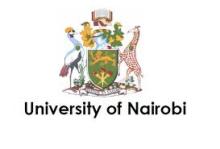Resource information
This study aims to document various community efforts in land rehabilitation and assess their potential. Data were captured using interviews and focus group with 150 community members. A public participation index was used to establish the extent of community efforts in land rehabilitation. The study revealed that in the absence of proper management and dune stabilisation, large areas covered with mobile sand dunes continue to be a threat to grazing lands in northern Kenya. In recognition of this threat, the people of North Horr have launched several initiatives to contain the problem. Environmental and non-environmental group members scored participation rates (PP) of 87·5 and 50%, respectively. These include tree planting on both communal and individual plots and the management of Suaeda monoica through natural regeneration. Although the survival rates of most planted trees on group plots were low, Azadirachta indica that were planted on individual homesteads appeared to be performing comparatively well. Natural regeneration of indigenous plant species such as Suaeda monoica has the potential to perform important economic and ecological functions. The study concludes that in order to effectively arrest the process of desertification on the pastoral drylands of northern Kenya and to restore productivity and biodiversity, it is important to take actions that incorporate both biophysical and human considerations. Linking sociology to ecology is thus paramount in any sustainable dune stabilisation (SDS) programme. Copyright © 2009 John Wiley & Sons, Ltd.


